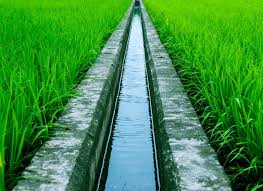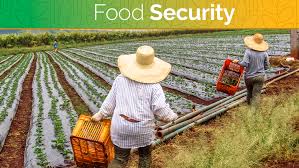Global food security refers to the availability of food, access to food, and the ability to utilize food properly to maintain a healthy life. It ensures that all people have enough nutritious food to meet their dietary needs and lead active, healthy lives.
With the world’s population expected to reach nearly 10 billion by 2050, ensuring food security is becoming increasingly important. This article will explore the current challenges in food security, the role of innovation in agriculture, and how technological advancements and crop improvement can help achieve sustainable farming practices.
Current Food Security Challenges
Several challenges threaten global food security. Understanding these challenges is the first step towards finding solutions:
1. Population Growth: The world population is growing rapidly, which increases the demand for food. More people mean more mouths to feed, placing pressure on food systems.
2. Climate Change: Climate change is altering weather patterns, leading to unpredictable rainfall, droughts, and floods. These changes negatively affect crop yields and food production.
3. Poverty and Inequality: Many people cannot afford nutritious food due to poverty. Economic disparities lead to unequal access to food, exacerbating hunger in vulnerable populations.
4. Conflict and Instability: Wars and conflicts disrupt food production and distribution. Regions affected by violence often face food shortages, making it difficult for people to access necessary nutrition.
5. Resource Depletion: Unsustainable agricultural practices deplete natural resources such as soil, water, and biodiversity. This depletion reduces the ability to produce food effectively over time.
6. Food Waste: Approximately one-third of all food produced globally is wasted. This waste occurs at various stages, from production to consumption, contributing to food insecurity.
The Role of Innovation in Agriculture
Innovation plays a crucial role in addressing food security challenges. It encompasses new ideas, technologies, and practices that improve agricultural productivity and sustainability. Here are key aspects of innovation in agriculture:
1. Increased Productivity: Innovative practices can lead to higher crop yields, allowing farmers to produce more food with the same resources. This helps meet the growing food demand.
2. Resilience to Climate Change: Innovative farming techniques can help crops withstand climate challenges, such as drought and extreme weather conditions, ensuring stable food supplies.
3. Efficient Resource Use: Innovations can enhance the efficient use of water, soil, and nutrients, reducing waste and promoting sustainable farming practices.
4. Improved Supply Chains: Technological advancements can streamline supply chains, reducing food loss during transportation and storage. This ensures more food reaches consumers.
5. Empowerment of Farmers: Innovations provide farmers with tools and knowledge to improve their practices, leading to better incomes and food security in their communities.
Technological Advancements for Sustainable Farming

Technological advancements are transforming the agricultural landscape. Here are some key technologies driving sustainable farming practices:
1. Precision Agriculture: This involves using technology to monitor and manage field variability in crops. Techniques include using GPS and sensors to apply water and fertilizers more efficiently, leading to reduced waste and increased yields.
2. Drones and Satellite Imaging: Drones and satellite technology allow farmers to gather data about crop health, soil conditions, and weather patterns. This information helps them make informed decisions about planting and resource use.
3. Hydroponics and Vertical Farming: These methods enable growing crops without soil, using nutrient-rich water solutions. They save space, use less water, and can be practiced in urban areas, reducing the need for transportation.
4. Biotechnology: Advances in biotechnology, such as genetically modified organisms (GMOs), allow scientists to create crops that are more resistant to pests, diseases, and environmental stressors, leading to higher yields.
5. Mobile Applications: Farmers can use mobile apps to access weather forecasts, market prices, and best farming practices. These tools empower farmers with knowledge and resources, improving their productivity.
Innovations in Crop Improvement and Biotechnology
Crop improvement and biotechnology are critical components of modern agriculture. Here are some innovations in this field:
1. Genomic Selection: This method uses genetic information to select plants with desirable traits, such as higher yields or disease resistance. By breeding these plants, scientists can develop improved crop varieties more efficiently.
2. CRISPR Technology: CRISPR is a revolutionary gene-editing tool that allows precise modifications to plant genomes. It can enhance traits like drought tolerance or nutritional content, helping crops adapt to changing environments.
3. Traditional Breeding Techniques: Innovative breeding techniques that combine traditional methods with modern science can produce crops that are better suited to local conditions and consumer preferences.
4. Enhanced Nutritional Content: Biofortification is a process where crops are bred to contain higher levels of vitamins and minerals, helping to combat malnutrition and improve public health.
5. Pest and Disease Resistance: Innovations in biotechnology can develop crops with built-in resistance to pests and diseases, reducing the need for chemical pesticides and promoting sustainable farming practices.
Read Also: 7 Medicinal Health Benefits of Gynostemma pentaphyllum (Southern Ginseng)
Water Management and Irrigation Technologies

Water management is crucial for sustainable agriculture, especially in the face of climate change and increasing water scarcity. Effective irrigation technologies help optimize water use, ensuring crops receive the right amount of moisture. Here are key aspects of water management and irrigation technologies:
1. Drip Irrigation: This method delivers water directly to the plant roots through a system of tubes and emitters. It reduces water waste, conserves soil moisture, and can increase crop yields.
2. Sprinkler Irrigation: Sprinklers distribute water over crops, mimicking natural rainfall. This system is versatile and can be used for various crop types, but it requires careful management to avoid evaporation losses.
3. Rainwater Harvesting: Collecting and storing rainwater can supplement irrigation needs. This practice helps farmers utilize a natural water source, reducing dependence on groundwater.
4. Soil Moisture Sensors: These sensors measure the moisture level in the soil and provide real-time data to farmers. By using this information, farmers can irrigate more efficiently, ensuring crops receive adequate water without over-irrigation.
5. Integrated Water Management: This approach considers the entire water cycle, including surface water, groundwater, and rainfall. It promotes collaboration among different stakeholders to manage water resources effectively, ensuring sustainability.
Read Also: 7 Medicinal Health Benefits of Sandalwood (Santalum album)
Reducing Food Waste Through Innovative Solutions

Food waste is a significant challenge that affects food security and environmental sustainability. Innovative solutions can help reduce waste at various stages of the food supply chain:
1. Improved Supply Chain Management: Technology can streamline logistics and distribution, minimizing delays and losses during transportation. Better inventory management helps prevent overstocking and spoilage.
2. Consumer Education: Raising awareness about food waste and teaching consumers how to store food properly can reduce waste at the household level. Simple tips, like planning meals and using leftovers, can make a significant impact.
3. Food Recovery Networks: Establishing networks that connect food producers, retailers, and food banks can help redirect surplus food to those in need, rather than letting it go to waste.
4. Innovative Packaging: Developing packaging that extends shelf life can reduce spoilage. Technologies such as vacuum sealing and modified atmosphere packaging help preserve food quality.
5. Upcycling Food Waste: Finding ways to repurpose food waste into new products, such as animal feed or compost, reduces the overall amount of waste generated and creates additional value.
Policy and Institutional Support for Innovation
Policies and institutional frameworks play a critical role in fostering innovation in agriculture. Supportive measures can create an environment where new ideas and technologies can thrive:
1. Research and Development Funding: Governments and institutions should invest in agricultural research and development to encourage innovation. Funding can support new technologies, crop varieties, and sustainable practices.
2. Training and Education Programs: Providing training for farmers on new technologies and best practices enhances their ability to adopt innovations. Workshops, extension services, and online resources can facilitate this learning.
3. Collaboration Between Stakeholders: Encouraging partnerships among government agencies, NGOs, private sectors, and academic institutions can promote knowledge sharing and collaboration on agricultural innovation projects.
4. Incentives for Sustainable Practices: Policies that provide financial incentives for adopting sustainable farming practices, such as tax breaks or subsidies, can encourage farmers to innovate and invest in new technologies.
5. Regulatory Frameworks: Establishing clear regulations that support innovation while ensuring food safety and environmental protection can create a conducive environment for agricultural advancements.
Global food security is a pressing challenge that requires innovative solutions and sustainable agricultural practices. Understanding the current challenges and leveraging technological advancements in agriculture can help address these issues effectively.
Innovations in crop improvement and biotechnology offer promising pathways to enhance food production, reduce environmental impacts, and ensure that all people have access to nutritious food.
By embracing innovation, we can build resilient food systems capable of feeding the growing population while protecting our planet. Collaboration among governments, researchers, and farmers is essential to implement these technologies and practices effectively, ensuring a sustainable and food-secure future for all.
Do you have any questions, suggestions, or contributions? If so, please feel free to use the comment box below to share your thoughts. We also encourage you to kindly share this information with others who might benefit from it. Since we can’t reach everyone at once, we truly appreciate your help in spreading the word. Thank you so much for your support and for sharing!
Read Also: Waste Management Startups: The Future of Sustainable Waste Management

